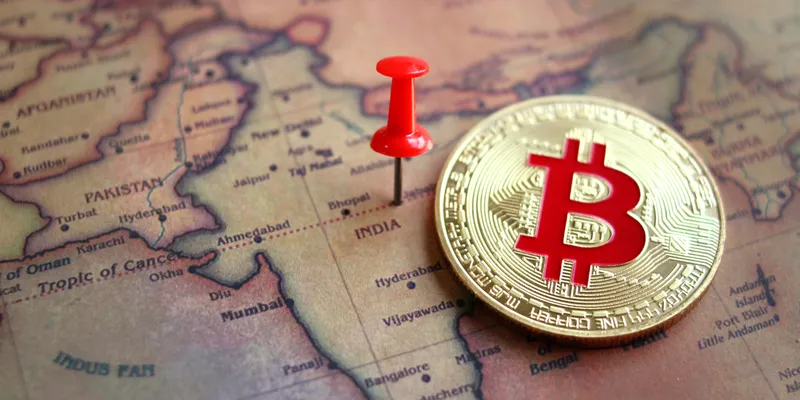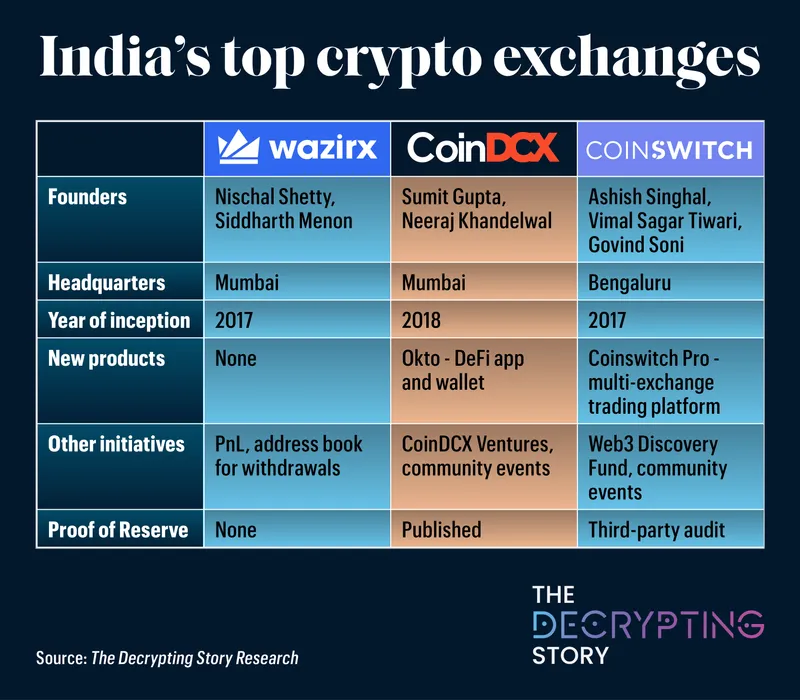Building for the next bull run: How Indian crypto exchanges are weathering the storm
Notwithstanding the current bear market, India’s leading crypto exchanges have continued to announce new products and features, and taken measures to be seen as safe, secure and trustworthy.
Crypto winter is here. Following the crash of the Terra (LUNA) ecosystem and FTX’s sudden collapse in 2022, it is clear that we have entered the bear market. World over, crypto firms have either had to scale back, halt operations or re-consider roadmaps in the wake of prevailing market conditions.
In India, the situation is exacerbated by the government’s imposition of a 30% income tax on crypto profits. Crypto firms in the country have been rallying for what they consider a more fair imposition of tax and regulation of digital assets in the country.
This is because the current tax slab has led to lower trading volumes in Indian cryptocurrency exchanges.
Two of India’s leading crypto exchanges— and — have seen daily trade volumes decline from hundreds of millions of dollars per day (at their peak) to around about a million dollars a day.
On December 8, WazirX’s daily trading volume was recorded at $980,059.70, while CoinDCX recorded $1,523,993.82, as per CoinMarketCap data. No data was available for Coinswitch —another leading Indian exchange.
For exchanges, trade activity is the lifeline as they rely on transaction fees as their primary source of revenue. Such steep declines in trading volumes directly translate to a sharp fall in revenue for most of these firms.
While things appear to be doom and gloom, some have been announcing new products, services and features, seemingly in a bid to diversify beyond order-book-based crypto transaction services.
In fact, they are already building for the next bull run, and also taking measures to earn trust from users by publishing transparency reports on their asset holdings, mirroring global moves by crypto giants like Binance.

YourStory's The Metaverse Summit 2023 to connect Web2 with the Web3 world
CoinDCX’s foray into Web3
Mumbai-based CoinDCX is working on a Decentralised Finance (DeFi) app named Okto, which it says will allow users to access Decentralised Apps (DApps) and tokens and act as a self-custodial wallet.
Okto was announced in August, prior to the FTX debacle. According to the company, this foray into deeper Web3 domains was in the works for a long period of time and was not a direct response to declining trade volumes.
“In crypto, custody could go the centralised or the decentralised way. At CoinDCX , we believe in the unique capability of crypto being decentralised. We’ve been working on Okto for well over eight months now,” says Gaurav Arora, SVP - DeFi Initiatives, CoinDCX.
The exchange believes the next phase of growth will come from the decentralised side of crypto. Gaurav adds, “This is why we are building Okto, and not as a response to the current noise. We are building for the next bull market.”
Coinswitch’s multi-exchange platform
Bengaluru-based Coinswitch also appears to looking towards the next phase of Web3 adoption. In November, it launched Coinswitch Pro - a multi-exchange trading platform for users to trade crypto across Coinswitch, CoinDCX and WazirX with a singular login.
“Our plans had taken shape around two years ago, long before the current challenges in the crypto industry and retail investment landscape surfaced,” Ashish Singhal, Co-founder and Chief Executive Officer (CEO) of Coinswitch tells The Decrypting Story.
According to Ashish, plans to become a wealthtech destination for Indians was always in the works, with opening a crypto platform for retail investors being the starting point.
To him, CoinSwitch Pro is a step in that direction. The exchange is also planning to launch its first non-crypto offering by the end of March 2023.
Meanwhile, WazirX, has no plans to launch new offerings. Instead, it is focusing on improving user experience on the crypto trading front on its platform.
“Crypto is still a new area of interest for many. So we have introduced new features such as Profit and Loss (PnL), address book for crypto withdrawals, gift cards, action cards and self-service for account management,” says Rajagopal Menon, Vice President, WazirX.

Design: Chetan Singh
Doubling down on Proof of Reserves and Native tokens
Part of the reason for FTX’s collapse—which led to the crypto market plunging to $763 billion recently from a peak of $2.5 trillion in May 2021—was its native FTT token. FTX allegedly misused customer funds as well as FTT to cover up losses incurred by sister firm Alameda Research.
To prevent customers from being exposed to risk, CoinDCX and Coinswitch opted not to issue a native token—the exception of the lot being WazirX, with its token WRX, which it issued in 2020.
“We do not have a native token as it exposes the users to asset concentration risk as well as liquidity risk. CoinDCX has taken a conscious decision to not have a native token,” said Minal Thukral, Executive Vice President Growth and Strategy at CoinDCX, in a recent interview with The Decrypting Story.
While not having a native token “seems unexciting”, according to Ashish, risk management is not meant to be exciting.
Given the latest scepticism around centralised exchanges, several have also issued a Proof of Reserves document (PoR). A PoR is an audit document that can be easily verifiable. It makes public the reserves of a centralised exchange, which anyone outside of the exchange can scrutinise.
In India, WazirX is working on releasing its Proof of Reserves (PoR) to showcase the security of user funds on its platform. CoinDCX published its own PoR in November, while Coinswitch cited an independent third-party audit which reportedly found that its holdings matched customer investments.
With these measures, Indian crypto exchanges are attempting to be seen as safe, secure and trustworthy. To them, this is going to be critical for onboarding crypto users when the next bull run comes knocking.
Edited by Akanksha Sarma







